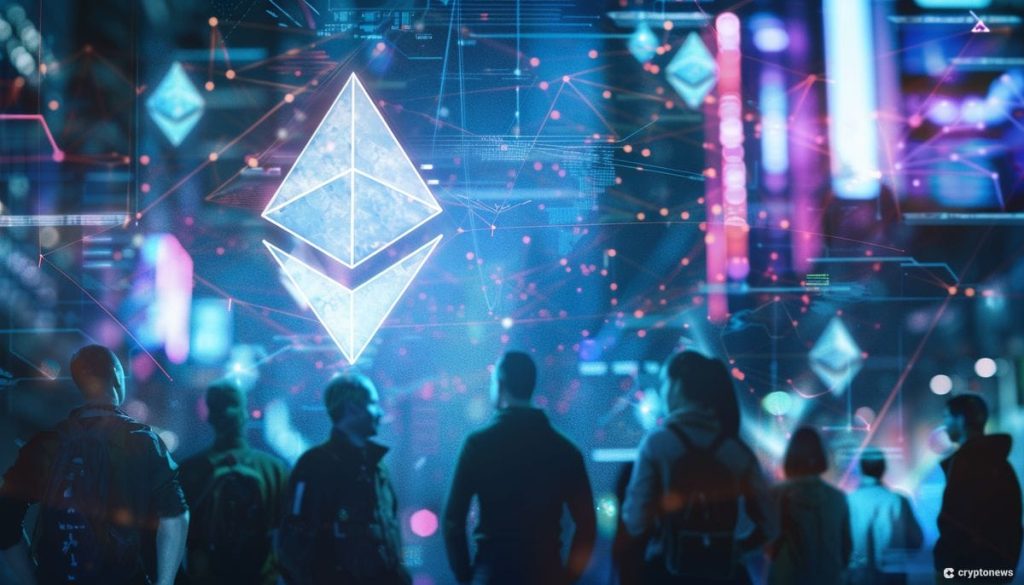Summarize this content to 2000 words in 6 paragraphs
Ethereum co-founder Vitalik Buterin has outlined his vision for achieving seamless cross-chain interoperability among Ethereum layer-2 (L2) networks.In a recent post on X, Buterin discussed the most promising approaches to resolving cross-L2 interoperability challenges.The conversation followed his August 5 post, where he expressed optimism about overcoming these issues, predicting a smooth user experience across Ethereum’s L2 networks.Vitalik Buterin said that a strong collective effort within the community is needed to realize this goal, highlighting several Ethereum Improvement Proposals (EIPs) aimed at enhancing cross-L2 compatibility.EIP-3370 to Introduce New Address StandardOne key proposal on this roadmap is EIP-3370, which introduces a new address standard.The standard requires wallets and decentralized applications (dApps) to display chain-specific addresses using a human-readable prefix, simplifying the user interface.Another significant step is EIP-7683, which seeks to establish a standard communication protocol for different Ethereum L2 networks.This proposal aims to facilitate efficient asset trading across chains, addressing the current complexities and inefficiencies users face when moving assets between networks.By implementing a unified set of rules, EIP-7683 would streamline inter-chain transactions.
Cross-L2 roadmap in one tweet:
* 3770 (cross-L2 addrs)* 7683 (cross-L2 sends via liquidity providers)* 3668 (L2 light clients)* Cross-L2-replayable account state updates
The above is enough already. Later, phase 2:
* L1sload/staticcall* Keystore rollups* Proof aggregation
— vitalik.eth (@VitalikButerin) August 5, 2024Additionally, EIP-3668 is on the agenda, proposing a method for Ethereum smart contracts to access off-chain data in a standardized manner.Referred to as “layer-2 light clients” by Buterin, this proposal aims to make it easier and more cost-effective for developers to build applications that rely on large data sets without incurring high on-chain storage costs.Vitalik Buterin also discussed “cross-L2-replayable account state updates,” a concept he elaborated on in a 2023 blog post.This approach allows L2 networks to receive recent layer-1 (L1) state updates while maintaining security and low latency.Buterin Mentions Phase 2 Updates to Enhance CompatibilityLooking ahead, Buterin mentioned several phase 2 updates to further enhance cross-chain L2 compatibility, including keystore rollups and proof aggregation.He emphasized that these “stage 1” updates are independent of the specifics of rollup technology, suggesting a broader applicability.Regarding compatibility with existing zero-knowledge (zk) and optimistic rollups, Buterin believes that all rollups will eventually adopt zk technology to finalize transactions to Ethereum once per slot.However, he anticipates this transition will take more than five years.Earlier this year, investment manager VanEck predicted that Ethereum L2 scaling networks could reach a $1 trillion market capitalization within six years, underscoring the significant potential of Buterin’s vision for cross-chain interoperability.More recently, Buterin voiced his concerns regarding overly complicated Layer 2 scaling solutions.At the time, the Ethereum mastermind highlighted the potential risks associated with complex Layer 2 networks and urged for a more balanced approach in the development of blockchain ecosystems.In the blockchain community, there is a prevailing belief that Layer 1 networks should prioritize simplicity to minimize the risk of critical bugs and attack vectors.Consequently, the responsibility for handling more complex features falls upon Layer 2 networks, which are designed to provide scaling solutions.These networks bundle transactions executed on a separate network and submit them in batches for validation on Layer 1, enhancing throughput and reducing transaction fees.


